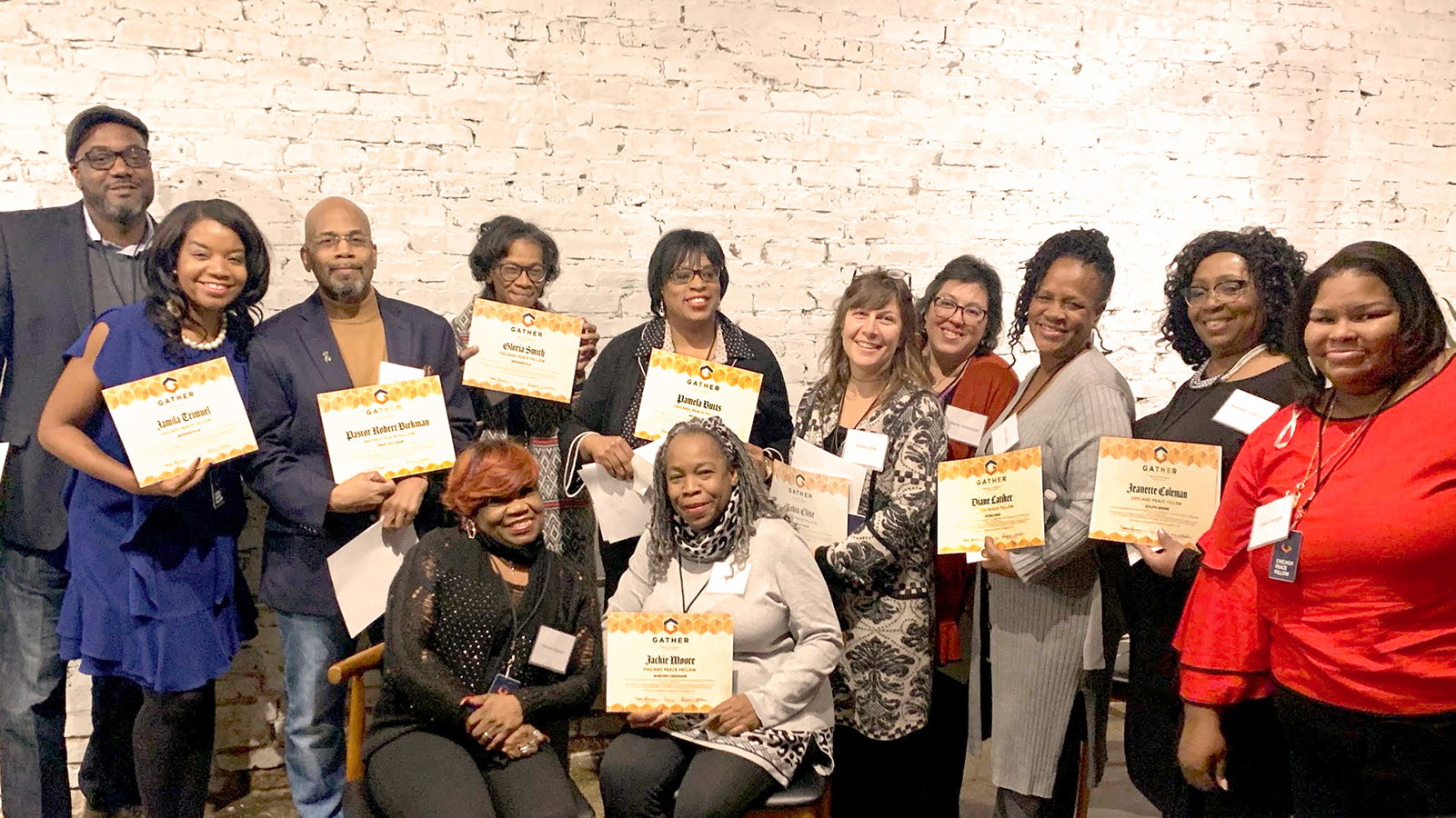
Peace Fellows Program Brings Anti-Violence Leaders Together
Starting in 2015, a year when Chicago was reeling from the growing epidemic of gunfire, Dr. Sokoni Karanja and a group of his friends and neighbors wanted to do something about the violence. After talking to police and public officials, they decided to focus their attention on one of the most violent swaths in the city.
The volunteers would go to one block in the area each Saturday and sweep the streets, pull trash from vacant lots. They would knock on doors and talk to residents in the neighborhood, who often got involved in the cleanup.
After six months of Saturdays, going block by block, “We got to Calumet and 51st. That’s where the problems were,” Sokoni says of the apartment building on the northern edge of Washington Park. “Large numbers of young people were gathering around that high rise. It drove a lot of conflict and violence.”
They started organizing tenants’ organizations in the high-rise and a nearby seniors building.
“We asked, ‘What do we want for the future of our neighborhood?’” Karanja said. “We started phone trees connecting businesses, seniors, block clubs and tenant unions. Many of the young people who hung out moved on or left, but many also got involved.”
Thanks in large part to efforts like these, the violence in Bronzeville has been measurably reduced. Karanja said the numbers dropped from 27 shootings in 2016 down to two in 2018 and so far none this year.
Peace Fellows Seek Ways To Prevent Violence
Sokoni is now one of 17 Peace Fellows, a program led by the Chicago-based Goldin Institute, which has trained and connected grassroots leaders in more than 40 countries over the past 17 years. To apply for the Fellowship, applicants must have been among 2018’s Chicago Fund for Safe and Peaceful Communities grantees.
Peace Fellows are already organizers for change in their neighborhoods, now they are undertaking a 14-week course designed by Goldin to build on the talents of their neighbors and the assets of their communities to make real and lasting change. A major goal for the program is to get anti-violence groups in front of their communities’ problems, instead of reacting to them.
The Fellows are from Auburn Gresham, Austin, Back of the Yards, Bronzeville, East Garfield Park, Englewood, Humboldt Park, Little Village, New City, Roseland, South Chicago, South Shore, Washington Park, West Englewood, West Pullman, West Town, and Woodlawn.
Fellows ‘Gather’ From Across The City With Advanced Digital Tool
Goldin’s “Gather” learning system begins with each fellow receiving a tablet computer equipped with the program’s software tools designed for collaboration. As part of the course, the group generated a list of 30 projects they would collaborate on and eventually chose eight to implement.
Through Gather they are able to reflect together on their practical experience and work together on real problems in their communities. They can do research in the Gather Mobile library and find references on best practices for organizing and work in the field. The staff is there to support them. And they have been able to meet with Fellows from around the world, with whom they can collaborate and share experiences.
At the end of this year’s program, Fellows will meet to review their progress and assess the projects. Then they become part of the Gather Alumni Network with Fellows from around the world. Monthly trainings, workshops and updates will be available to keep them connected.
During the learning sessions, staff asks big questions, like “What are the assets in the neighborhood,” where the Fellows are organizing. Then they go seek the answers and come back to talk about it.
The Fellows know that the difficult work they are doing requires reflection and self-care, and that’s one thing they help one another with, said Jackie Moore, who organized a retreat where the group can deepen their relationships with one another.
Projects Aim At Transforming Communities
The community project Moore has taken the lead on, the Chain Reaction for Peace, involves contemplating the word peace, imagining a physical manifestation that flows from these thoughts, building that concept with found objects and common craft materials and then activating what Moore calls “metaphorms,” objects that visually stand for a concept, actually getting it to move, and finally linking all of these together.
“It demonstrates that talking about peace isn’t enough,” she says. “And the activation event shows that multiple individuals’ action can create real changes.”
A project the Rev. Robert Biekman is working on, holding Passport 2 Peace events, has this same process in mind. But he cautions, “We should focus on building peace instead of reducing violence.”
The events aim to get people from a neighborhood into intergenerational peace circles, creating “a moment that will lead us to a movement.”
Peace circles are used in conflict resolution and restorative justice practices. Having an intergenerational component is important, said Lisa Daniels, a Fellow who has become a Chicago leader and teacher in using restorative justice practices.
“We get a sharing of wisdom from the elders and innovation from the youth. It creates a sense of shared humanity,” Daniels said.
As they join forces to transform communities the Fellows know progress will not always be a straight line. “Peace is a journey, not a destination,” Biekman said. “But we have to walk together.”
The Peace Fellows program is funded by the Chicago Fund for Safe and Peaceful Communities, the Goldin Institute, The Polk Brothers Foundation, JP Morgan Chase and the Conant Family Foundation. For more information, go to www.goldininstitute.org.

